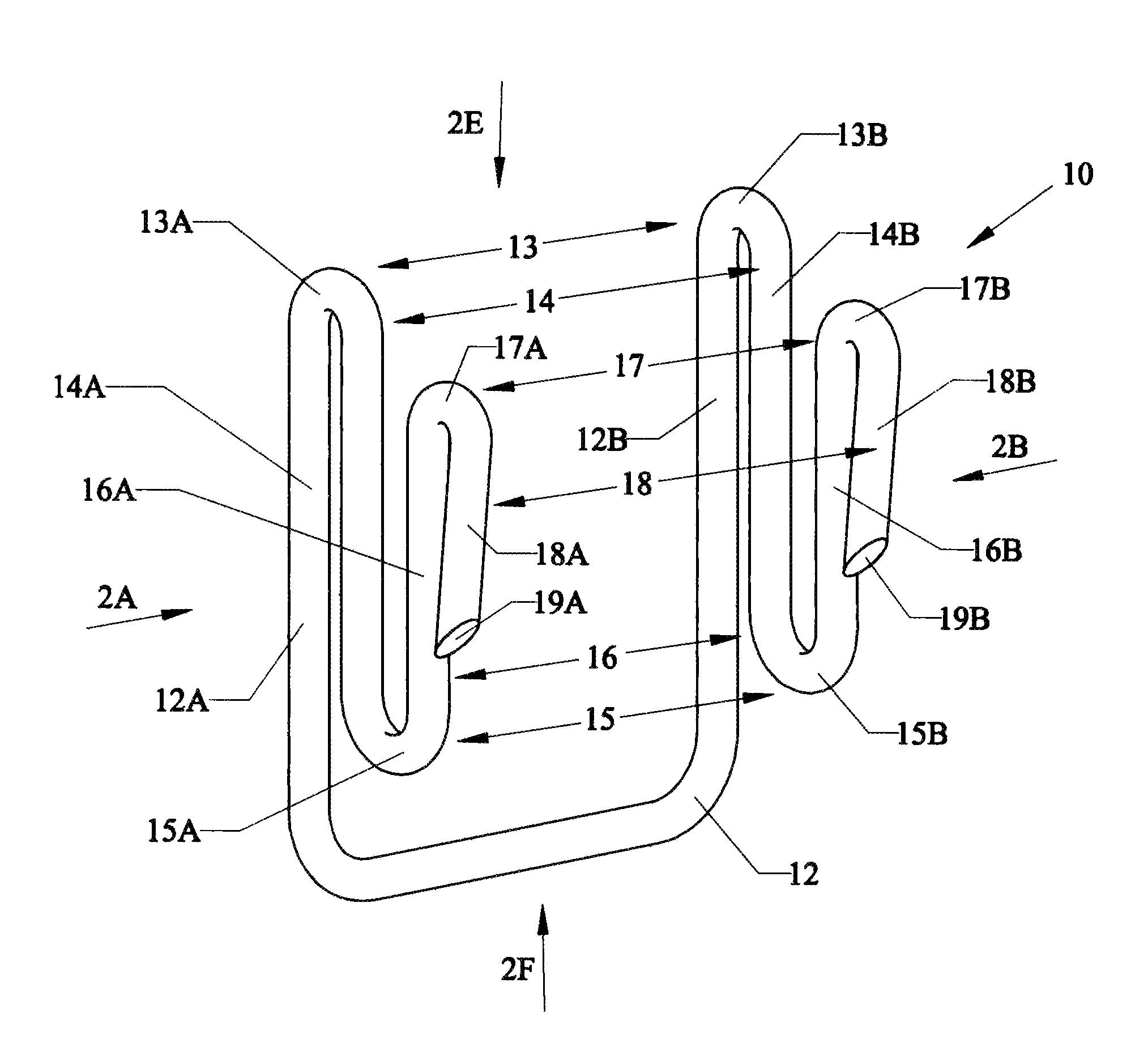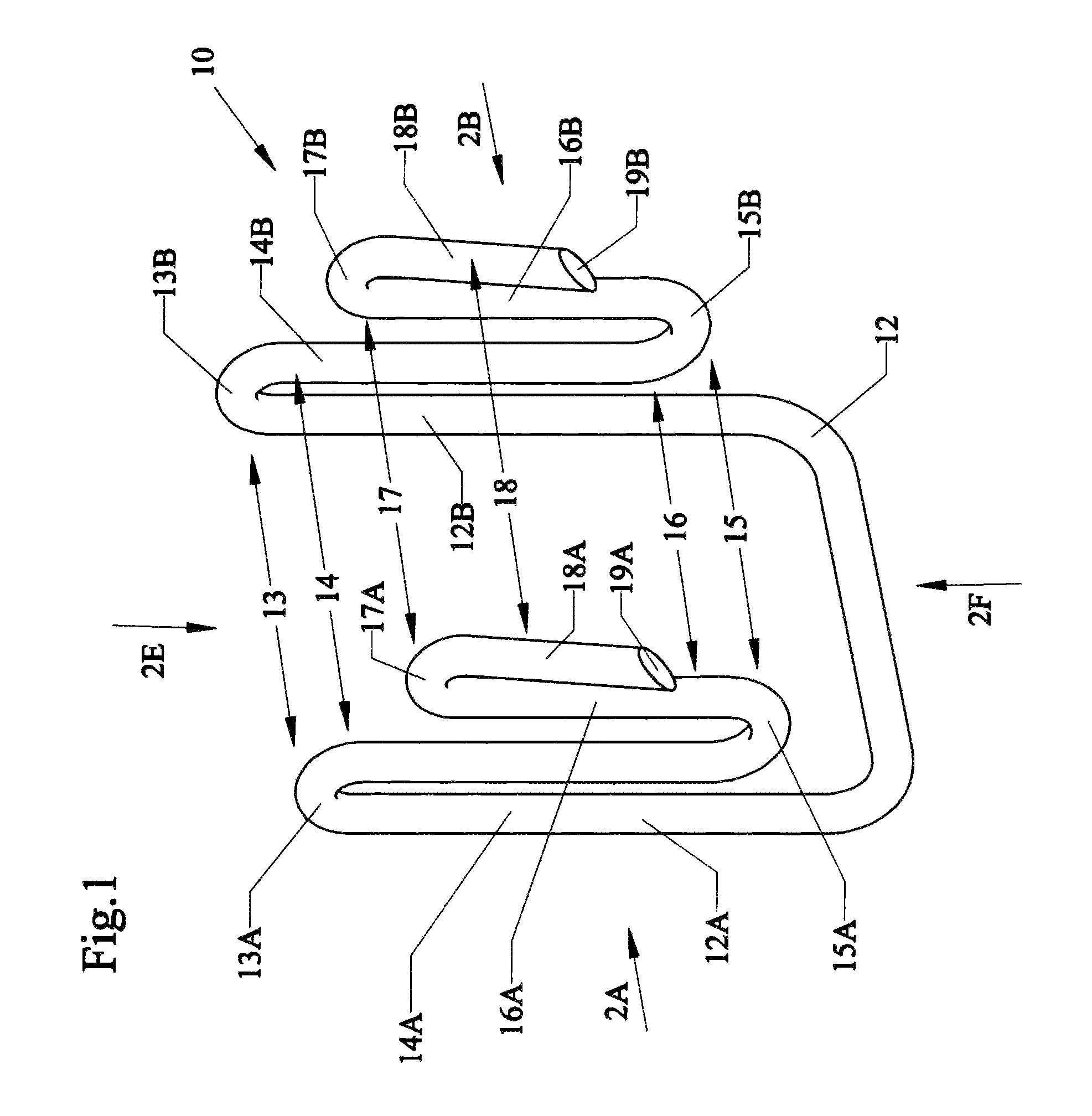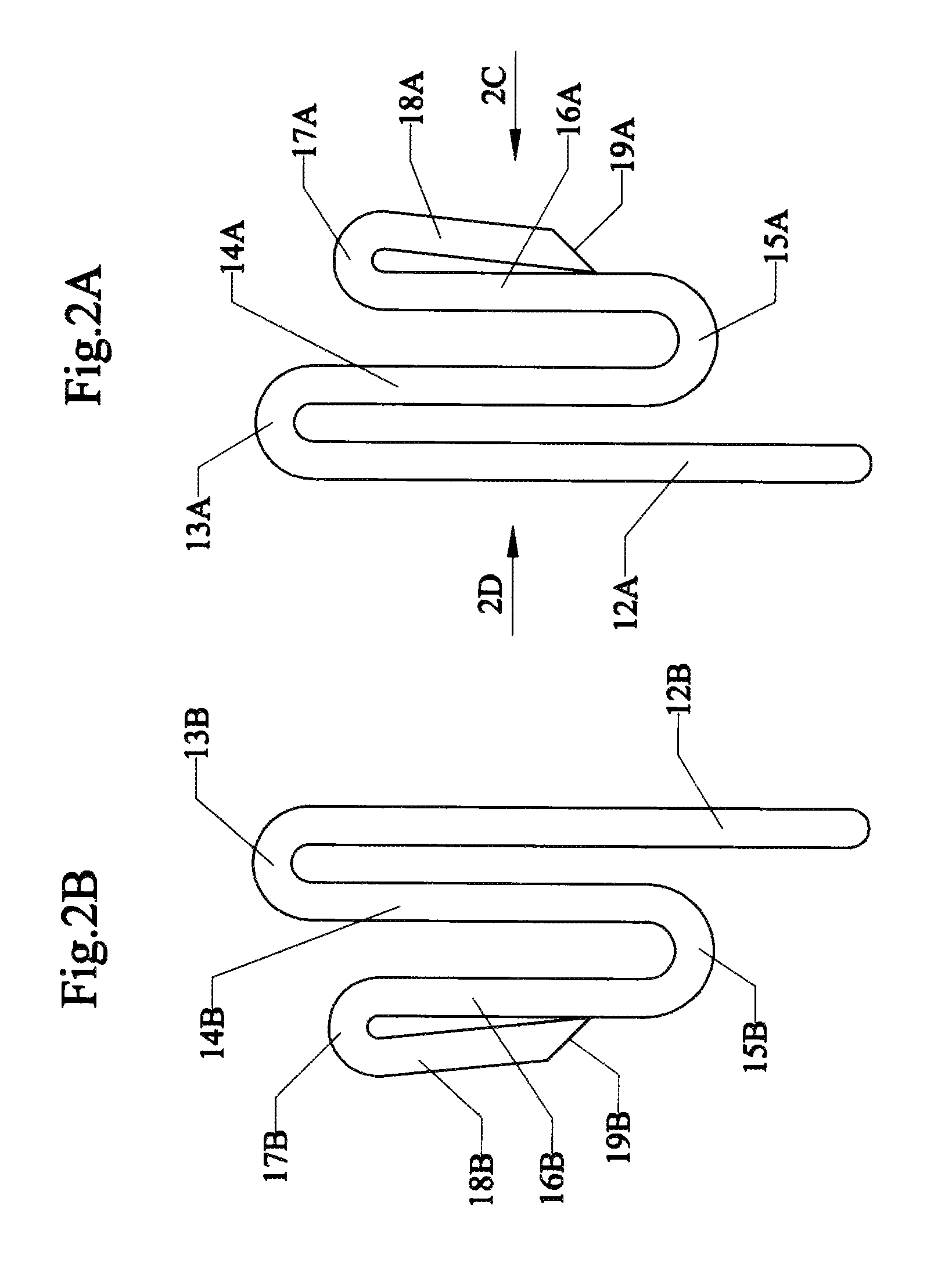Adjustable line clip holder
a line clip and adjustable technology, applied in the field of clips, can solve the problems of patients' discomfort, lack of necessary support for relieving the pressure of skin, face, neck, etc., and achieve the effects of reducing the weight and pressure, reducing the pain of pulling the cannula from the patient's ears, and reducing the pain of pulling and yanking the lines on the ears
- Summary
- Abstract
- Description
- Claims
- Application Information
AI Technical Summary
Benefits of technology
Problems solved by technology
Method used
Image
Examples
Embodiment Construction
[0058]Before explaining the disclosed embodiments of the present invention in detail it is to be understood that the invention is not limited in its applications to the details of the particular arrangements shown since the invention is capable of other embodiments. Also, the terminology used herein is for the purpose of description and not of limitation.
[0059]A list of components will now be described.[0060]10. clip holder[0061]12. rear U-shaped base[0062]12A. left base leg[0063]12B. right base leg[0064]13. first bends (upper bends)[0065]13A. left upper first bend[0066]13B. right upper first bend[0067]14. first set of (downwardly) extending prongs[0068]14A. left first downwardly extending prong[0069]14B. right first downwardly extending prong[0070]15. second bends (lower bends)[0071]15A. left second lower bend[0072]15B. right second lower bend[0073]16. second set of (upwardly) extending prongs[0074]16A. left upwardly second extending prong[0075]16B. right upwardly second extending ...
PUM
 Login to View More
Login to View More Abstract
Description
Claims
Application Information
 Login to View More
Login to View More - R&D
- Intellectual Property
- Life Sciences
- Materials
- Tech Scout
- Unparalleled Data Quality
- Higher Quality Content
- 60% Fewer Hallucinations
Browse by: Latest US Patents, China's latest patents, Technical Efficacy Thesaurus, Application Domain, Technology Topic, Popular Technical Reports.
© 2025 PatSnap. All rights reserved.Legal|Privacy policy|Modern Slavery Act Transparency Statement|Sitemap|About US| Contact US: help@patsnap.com



